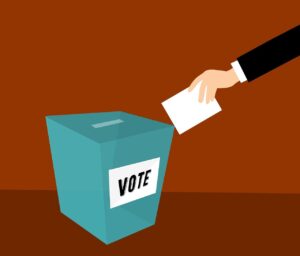Prime Minister Narendra Modi has a new ‘friend’ in the White House now. After Barack Obama and Donald Trump, it’s time to script a new saga of Indo-US friendship with Joe Biden becoming America’s 46th President. Biden is a long-time friend of India, a staunch supporter of Indo-US ties since his days in Senate and an advocate of India’s permanent membership of the UNSC since his vice-presidency under Obama.
Of late, his outburst against Donald Trump evinced Joe Biden’s deep respect for India. In defence of his stance on the Paris climate accord, when Trump called India’s air ‘filthy’ during a presidential debate ahead of the U.S. elections, Biden slammed his remarks with a tweet, ‘It’s not how you talk about friends’. He added that both he and Kamala Harris value the U.S. alliance with India and the admiration will be at the center of their foreign policy.
This is a testimony to the changing geopolitical landscape in the world which has brought the United States and India closer in the last two decades, resulting in soaring trade partnership and stronger diplomatic alliance between the countries.
And President Joe Biden’s amiable rapport with Prime Minister Modi bodes well for the bright future of the coalition. Remember, when PM Modi visited the U.S. in September 2014, Joe Biden hosted lunch for him.
Hoping to revive the old bonding for India’s stronger ties with the United States, PM Modi sent his warmest congratulations to Joe Biden as he took office on 20 January. In a tweet, PM Modi said that he looked forward to working with Biden to strengthen India-US strategic partnership taking it to greater heights. He emphasised that the India-US alliance is based on shared values and both countries stand united and resilient in addressing common challenges and advancing global peace and security.
Joe Biden ‘new dawn’ for India-US ties?
So what does India expect from the new U.S. President?
First, Business.
As per Office of the United States Trade Representative, U.S. goods and services trade with India totalled around $146.1 billion in 2019. Out of which American exports were $58.6 billion and imports were $87.4 billion. Which meant India had a $28.8 billion trade surplus with the U.S. in 2019.
A year before, in 2018-19, the United States first replaced China becoming India’s top trading partner. But the relations hit a hurdle under the Trump administration when it decided to remove India from its Generalised System Preferences programme in June 2019, which allowed duty-free entry of products (worth over $6 billion) in the United States.
Also Read | G7 summit: China snubbed, India invited. What it means
As a developing nation, India was a beneficiary of the scheme, but Trump was adamant on bridging the trade deficit with India. The U.S. sought equitable access for its products into Indian markets. Consequently, India also in a counterbalance action slapped additional custom duties on 28 domestic products like almonds, walnuts and pulses.
Before Donald Trump’s visit last year the negotiations were underway raising hopes of a big trade deal with the U.S. smoothing out the disagreements, but it failed to materialise.
During the presidential campaigning, Joe Biden categorically said that he would not sign a free agreement with any country, but hopes are high that the new U.S. President will restore India’s GSP benefits and sooner or later will hammer out a trade deal resolving concerns of tariffs, subsidies, etc between the two countries.
H-1B work visa and immigration issues
After his inauguration on Wednesday, U.S. President Joe Biden reversed several decisions taken by the Donald Trump government, which include changes in H-1B visa rules and immigration policies. He is also expected to send a comprehensive bill to Congress that proposes to remove per-country cap for employment-based green cards.
The initiative by the Biden govt will impact thousands of Indian IT professionals in the United States, who have to wait for decades for permanent residency in the country. Primarily, Indian IT professionals work in the U.S. on the H-1B work visas and the immigration system tweaked by Trump administration imposes a seven per cent per country quota on allotment of the Green Card or permanent legal residency. According to estimates, currently around 7.41 lakh Indians are in the cue for the green card.
India also looks forward to easing of norms for those who want to pursue their higher education and work in the United States.
Also Read: Kim Jong Un sidelined his sister to secure his throne?
Joe Biden’s stand on China crucial for India
Trump administration was unequivocal about its stand on China. But Joe Biden is a different man, he is expected to bring diplomacy into everything from trade negotiations to foreign and security policies.
However, with China emerging as the major global rival of the United States, the new administration must have plans charted out to tame the dragon neutralising its hegemony. India can prove effective in striking a power balance in the Asian continent.
After the coronavirus pandemic, Quad also shaped up with reluctant Australia becoming vocal against China. Now the group of India, U.S., Australia and Japan have to counter the Chinese influence in the Indo-Pacific region.
When PM Modi meets his counterpart Joe Biden on the sidelines of the G-7 summit in the United Kingdom, people of India anticipate a bonhomie like never before between the two leaders ushering in a new dawn for Indo-US relations.









Will Amarinder Singh prove BSY for BJP in Punjab?
Afghanistan crisis: Subjugation of a nation and the Taliban rule
Two-child policy: BJP’s masterstroke before elections in UP?